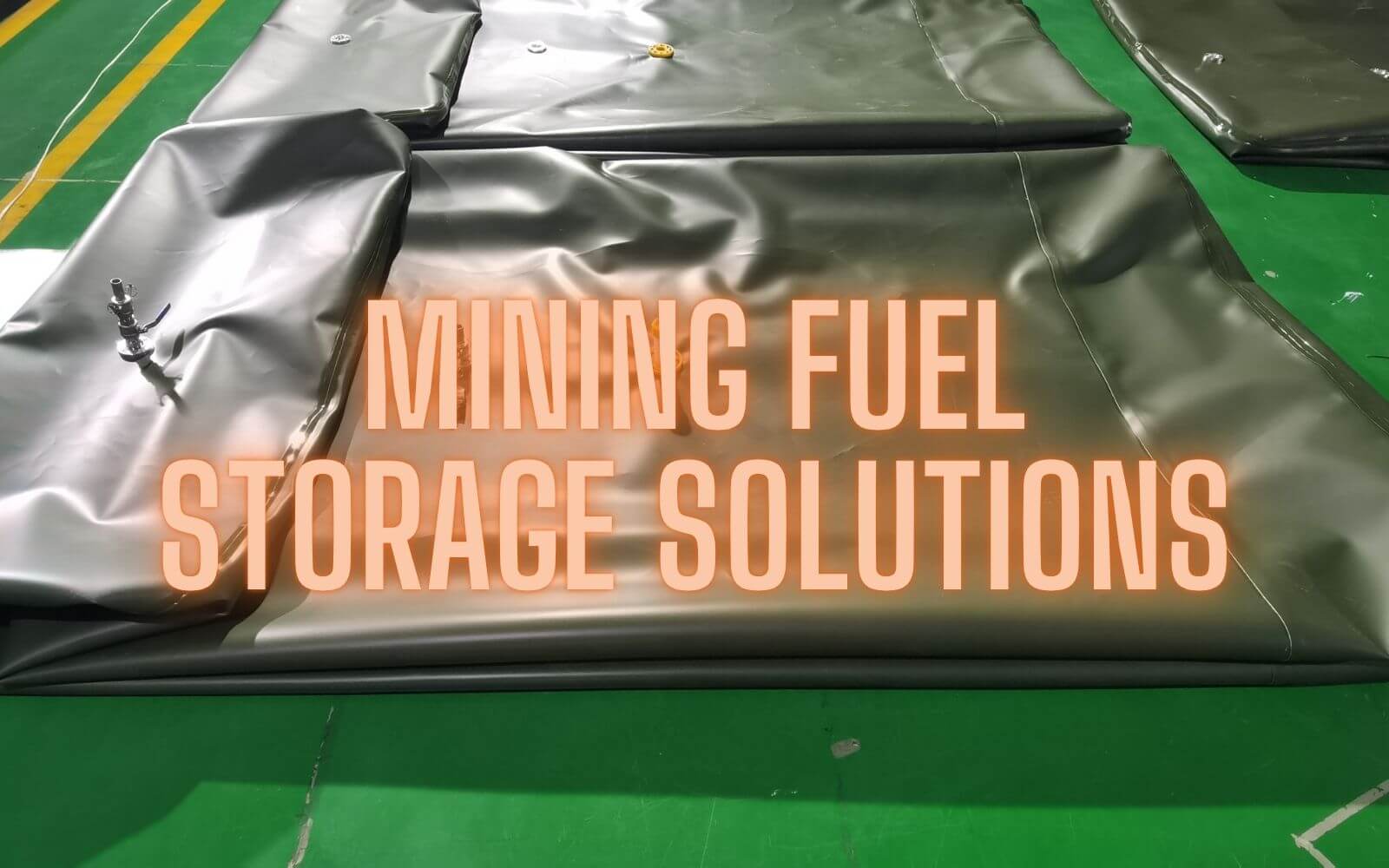MINING FUEL STORAGE SOLUTIONS
In the mining industry, reliable fuel storage is critical—especially in remote locations where traditional tanks are impractical. Mining fuel bladders offer a rugged, portable solution for diesel and frack-fuel storage, with features like 1000D fabric reinforcement, chemical resistance, and rapid deployment.
This guide covers:
What frac tanks are and why flexible versions excel
Key features of mining-grade fuel bladders
A real-world case study: 50,000L bladder at a gold mine
Customization options for extreme conditions
Applications in off-grid mining sites
By the end, you’ll understand why these bladders are the top choice for mining fuel storage solutions.
What Are Frac Tanks? The Rise of Flexible Fracking Tanks
Frac tanks (short for fracturing tanks) are large containers using for storage of water, diesel, or fracking fluids at mining and drilling sites. Traditionally, these were steel tanks, but flexible frac tanks are getting more and more popular now due to:
✔ Portability: Fold empty bladders into smaller storage size for transport to remote sites.
✔ Corrosion resistance: No rust from frack fluids or salty conditions, the PVC/TPU materials provide a stable performance to various liquid storage.
✔ Cost savings: 40–60% cheaper than steel tanks.
✔ Quick setup: Deploy in hours vs. days for rigid tanks.
Flexible Frac Tanks vs. Steel Tanks
| Feature | Flexible Frac Tank | Steel Frac Tank |
| Weight | 80% lighter when empty | Heavy, requires cranes |
| Installation | No foundations needed | Needs level ground, welding |
| Chemical Resistance | Resists acids, brine, diesel | Prone to corrosion |
| Lifespan | 8–12 years (TPU) | 15–20 years (with maintenance) |
Best for Mining: Flexible tanks are good for temporary sites, harsh chemicals, and remote logistics.
Key Features of Mining Fuel Bladders
1. 1000D Fabric Reinforcement
Puncture-proof against sharp rocks and tools.
Ripstop weave prevents small tears from spreading.
2. Frack-Fuel Compatibilit
TPU liners resist degradation from
Diesel
Hydraulic fluids
PVC liners: Acidic fracking fluids (pH 3–11)
3. Extreme Temperature Resilience
-40°C to +90°C operational range (crucial for Arctic or desert mines).
4. Safety & Compliance
Static-dissipative – Meets NFP 30 for fuel storage.
Spill containment – Optional secondary berms.
Case Study: 50,000L Fuel Bladder at a Gold Mine
Location: Remote Western Australia
Challenge:
No permanent fuel infrastructure
Weekly diesel deliveries costing $15,000/month in transport
Steel tanks corroding from acidic groundwater
Solution:
Installed a 50,000L TPU fuel bladder with:
1000D polyester reinforcement
Lockable theft-proof cover
Integrated fuel pump
Results:
✔ Reduced fuel deliveries by 60% (saving $9,000/month)
✔ Zero leaks despite rocky terrain
✔ Relocated easily as the mine expanded
Customization for Mining Operations
1. Size & Capacity
Small (5,000–20,000L): For exploration camps
Large (50,000–500,000L): For production sites
2. Fittings & Accessories
Diesel-rated pumps (12V or solar-powered).
GPS tracking for high-theft areas.
Heated options for subzero climates.
Fuel level sensor for liquid level monitor.
3. Transport Options
Skid-mounted: Drag with heavy equipment.
Containerized: Fit inside 20ft ISO frames for shipping.
Applications in Remote Mining Sites
1. Exploration Camps
Fuel for drills and generators where no infrastructure exists.
2. Fracking Operations
Store diesel for pumps and frack fluid blends.
3. Backup Fuel Reserves
Prevent shutdowns during supply chain delays.
4. Fly-In/Fly-Out Sites
Air-transportable bladders for Arctic/Alaskan mines.
FAQs About Mining Fuel Bladders
Q: How do you secure fuel bladders from theft?
A: Lockable covers, GPS tags, and onsite guards.
Q: Can they handle biodiesel (B20)?
A: Yes—with USDA-approved TPU liners.
Q: What’s the lifespan in mining conditions?
A: 5–10 years with proper care (avoid dragging over sharp rocks).
Why Mines Are Switching to Fuel Bladders
| Factor | Fuel Bladder | Traditional Tank |
| Deployment Speed | Hours | Weeks |
| Corrosion Risk | None | High (steel rusts) |
| Relocation | Easy | Requires cranes |
| Cost (50,000L) | ~$25,000 | ~$60,000+ |
Best For:
Exploration sites (temporary needs)
High-theft areas (easy to conceal)
Harsh environments (arctic, desert, tropical)
Final Recommendation
For mining companies operating off-grid, fuel bladders are the clear choice over traditional tanks. They offer:
✅ Faster deployment in new sites
✅ Lower costs (upfront and operational)
✅ Superior chemical resistance








